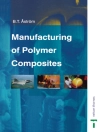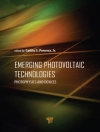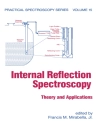Controlled/living radical polymerization (CRP) has revolutionized and revitalized the field of synthetic polymer chemistry over the last twenty years as it is now possible to prepare a wide variety of previously inaccessible macromolecules under relatively mild conditions. Fundamentals of Controlled/Living Radical Polymerization provides an in-depth coverage of the essential chemical principles that enable and govern each of the CRP methods. The book starts with a brief historical overview of the major findings in polymer science which eventually led to the development of living ionic and living radical systems. It then goes on to introduce the main CRP techniques including their mechanistic understanding. The book also provides the information needed to select the appropriate reagents and conditions to conduct various CRP methods in a practical setting. Therefore, in addition to a newcomer gaining an appreciation for what has already been accomplished, the reader will be armed with the tools needed to begin independent research. Fundamentals of Controlled/Living Radical Polymerization provides essential insight into a rapidly growing field that goes beyond a simple literature review of the area. Written by leading experts in the field, the book is an indispensible resource for all researchers, instructors, and students in polymer chemistry.
Содержание
Introduction;
Kinetic, thermodynamic and other aspects of radical polymerization;
Fundamental aspects of living polymerization;
Controlled/living radical polymerization in the presence of iniferters;
Controlled/living radical polymerization mediated by stable radicals;
Organometallic controlled/living radical polymerization;
Controlled/living radical polymerizations in the presence of tellurium, antimony, and bismuth compounds;
Reversible addition-fragmentation chain transfer (RAFT) polymerization;
Degenerative transfer polymerization based on iodine compounds and reversible chain transfer catalyzed polymerization mediated by germanium, tin and phosphorus compounds;
Atom transfer radical polymerization (ATRP)
Об авторе
Nick Tsarevsky obtained M.S. degree in theoretical chemistry and chemical physics in 1999 from the University of Sofia, Bulgaria, and Ph.D. degree in chemistry in 2005 from Carnegie Mellon University under the supervision of Prof. Kris Matyjaszewski. He was Visiting Assistant Professor at the Department of Chemistry at Carnegie Mellon University (2005-6), and a member of the founding team of ATRP Solutions, Inc., of which he served as Chief Science Officer (2007-2010). He joined the Department of Chemistry at Southern Methodist University in the summer of 2010 as an assistant professor, and in 2016 he was promoted to associate professor with tenure. He has authored and coauthored over 90 peer-reviewed journal articles and book chapters, 1 textbook, and has served as the co-editor of 5 books. Research interests include polymerization techniques, functional materials, coordination chemistry and catalysis, and the chemistry hypervalent compounds, in addition to history of chemistry and chemical education.












